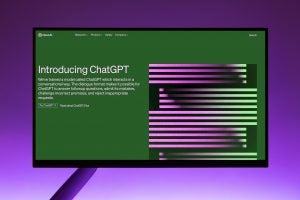Resources for Teaching and Research with Artificial Intelligence (AI)

Introduction to Generative Artificial Intelligence (AI)

Generative Artificial Intelligence (AI) technologies have become more widely accessible and they continue to evolve rapidly. Below are links to some of the resources and conversations on campus around teaching and research in the age of Artificial Intelligence (AI).
Workshops on Teaching and Research with Artificial Intelligence (AI)
The ECU Office for Faculty Excellence has partnered with faculty and organizations across campus to present workshops on the use of AI tools in Teaching and Research. To register for these workshops or to view recordings of previous workshops, please visit the OFE page for the Teaching and Research using Artificial Intelligence (AI) series.
Making Artificial Intelligence Generative for Higher Education (MAIGHE) Research Project
 ECU is one of 19 institutions in North America selected to participate in a two-year research project led by Ithaka S+R. The research project assesses the immediate and emerging AI applications most likely to impact teaching, learning, and research and explore the long-term needs of institutions, instructors, and scholars as they navigate this environment. To learn more about this project, please visit ai-research.ecu.edu.
ECU is one of 19 institutions in North America selected to participate in a two-year research project led by Ithaka S+R. The research project assesses the immediate and emerging AI applications most likely to impact teaching, learning, and research and explore the long-term needs of institutions, instructors, and scholars as they navigate this environment. To learn more about this project, please visit ai-research.ecu.edu.
Providing Guidance for Your Students
Students want to know your expectations for using AI tools in your course. Provide transparent information about your expectations and how they align with course goals and scholarly values. Include information in the syllabus and on assignments, particularly if there is variability in when or how much AI use is allowable. As AI tools become increasingly embedded in existing technologies, students may be in situations where it is unclear how the use of the tool relates to your expectations of them. If the students are unsure, please ask them to contact you for clarification. The LibGuide linked here has been developed by the ECU Library team to provide information and guidance. New for fall 2024, the Library team has developed a LibGuide aimed directly at students, linked here. This guide to AI for students covers AI basics, relevant AI tools, how to cite AI-generated content, hallucinations, ethical concerns, and more.
Syllabus Language
The Distance Education and Learning Technology Committee has collaborated with library faculty and the Office of Digital Learning and Emerging Technology Initiatives to provide recommended syllabus language regarding artificial intelligence (AI) and its use in courses. The full language and information can be found in the Generative AI in the Classroom & Research LibGuide. Below are the suggested statements, which should be modified to fit your course. These statements were adapted from the University of Delaware’s Considerations for using and addressing advanced automated tools in coursework and assignments (Center for Teaching & Assessment of Learning, retrieved April 24, 2023, from https://ctal.udel.edu/advanced-automated-tools/). If you have any questions, please direct them to Professor Melinda Doty, Chair of the Distance Education and Learning Technology Committee.
Use Prohibited
Students are not allowed to use advanced automated tools (artificial intelligence or machine learning tools such as ChatGPT or Dall-E 2) on assignments in this course. Each student is expected to complete each assignment without substantive assistance from others, including automated tools.
Use Only with Prior Permission
Students are allowed to use advanced automated tools (artificial intelligence or machine learning tools such as ChatGPT or Dall-E 2) on assignments in this course if instructor permission is obtained in advance. Unless given permission to use those tools, each student is expected to complete each assignment without substantive assistance from others, including automated tools.
If permission is granted to use advanced automated tools (artificial intelligence or machine learning tools such as ChatGPT or Dall-E 2), they must be properly documented and credited. Students should seek out the appropriate source (e.g., MLA, APA, etc..) and cite in the most correct format according to the style guide. Note, online style guides are being updated continually to include new sources such as ChatGPT.
If a tool is used in an assignment, students must also include a brief (2-3 sentences) description of how they used the tool, in addition to citing the use of any tool used.
Use with Acknowledgement
Students are allowed to use advanced automated tools (artificial intelligence or machine learning tools such as ChatGPT or Dall-E 2) on assignments in this course if that use is properly documented and credited. Students should seek out the appropriate source (e.g., MLA, APA, etc..) and cite in the most correct format according to the style guide. Note, online style guides are being updated continually to include new sources such as ChatGPT.
If a tool is used in an assignment, students must also include a brief (2-3 sentences) description of how they used the tool, in addition to citing the use of any tool used.
Assignment and Assessment Possibilities
Adapted from the Iowa State University Center for Excellence in Learning and Teaching (Iowa State Online. Center for Excellence in Learning and Teaching. (n.d.). https://www.celt.iastate.edu/resources/ai-teach-learn/)
In addition to assignment ideas presented in the Joyner Library Generative AI in the Classroom & Research LibGuide, listed below are examples of how instructors might adjust assignments and assessment techniques to embrace AI.
 Adapting Existing Assignments
Adapting Existing Assignments
Several strategies can be employed when developing assignments and assessments to help ensure students submit original work and discourage academic misconduct.
- Clarify your objectives and scaffold the assignments. Identify the knowledge, skills, and/or abilities that each assignment is helping learners develop. Then build in scaffolding, requiring a proposal, outline, rough draft, and final draft as a part of the process.
- Examine your course schedule and be flexible with due dates. Too many assignments, with too little turnaround time, can lead to students looking to take shortcuts, especially when coupled with stringent late policies.
- Partner with a librarian. Invite an ECU librarian to discuss information literacy and proper citation of AI tools in your course. The specific citation will depend on the citation format (MLA, APA, Chicago, etc.) used in your course. ECU Librarians have created this LibGuide on Artificial Intelligence with a wealth of information on the technology.
- Implement mitigation strategies. Explore emerging AI detectors, adapting existing assignments, or embracing AI to improve learning.
- Required References: Alter assignments to require students to reference a certain number of current events or recent articles that would not yet be included in the AI’s database. Require students to find referenced sources before citing.
- Reflection: Require students to reflect on their research and writing process, what they learned from it, and how they would approach a similar task in the future.
- Mind Maps: Have students create a visual ‘mind map’ to illustrate the connections between ideas, concepts, approaches, or theories.
- Debates: Have students debate a major question or challenge. Even short debates can deepen learning and get students to look at topics from varied perspectives.
- Written work tied to specific course materials: Design writing prompts that require careful analysis of multiple course materials specific to your class.
Embracing AI to Improve Learning
Note: When developing assignments and projects, it is essential to recognize that not all AI tools are designed for universal accessibility, which may limit their use for students.
If you are interested in experimenting with AI in your course, explore the assignment suggestions in Update Your Course Syllabus for chatGPT by Ryan Watkins and Understanding AI Writing Tools and their Uses for Teaching and Learning at UC Berkeley by Berkeley’s Center for Teaching & Learning. Todd Finley (ECU College of Education) shared this blog post about ways he envisions his students can learn to use the technology. The examples below are adapted from those resources as potential ways to incorporate AI into your course assignments.
- Prompt Competition (working in pairs or individually): Identify a major question or challenge that ChatGPT could write about. Ask students to create a rubric to assess the ChatGPT response, then judge the responses of other students and rank them based on a set of criteria.
- Reflect and Improve: Identify a major question or challenge in your discipline and prompt ChatGPT to write about it. Ask students to reflect on the output (e.g., what is correct, what is incorrect, are there sections of the output where they don’t know if it is correct or incorrect, what should they look up elsewhere to verify, describe why they chose that resource as a reliable source of information, etc.). Have students edit the output using a ‘track changes’ feature to improve the ChatGPT response.
Use Caution if Applying Tools to Detect AI-generated Content
Similar to using TurnItIn software to detect plagiarism, there are tools designed to detect AI-generated content. However, it is important to note that there are limitations to using these tools, and there is no guarantee they are fully accurate. There could also be a variety of unintended consequences. A blog post by University of Mississippi instructor Marc Watkins describes this issue and shows examples of output from multiple detection tools.
From ECU Student Affairs
The ECU Libguide strongly recommends faculty remind their students to always cite when using any AI tool to assist with an assignment. Additionally, The Office of Student Rights and Responsibilities has created several Academic Syllabus Statements that you can add to your syllabi. They have created faculty resources and upholding academic integrity activities for inclusion in your course.
Resources and References
- ECU Library LibGuide for Generative AI in the Classroom & Research
- Unlocking AI’s Potential in Higher Education – 12 Innovative Ideas to Help Leaders Identify AI Promises Across Campus (Infographic)
- Chronicle of Higher Education. (2023). ChatGPT Has Changed Teaching: Our Readers Tell Us How. https://https://www.chronicle.com/article/chatgpt-has-changed-teaching-our-readers-told-us-how. Retrieved December 14, 2023 from https://www.chronicle.com/article/chatgpt-has-changed-teaching-our-readers-told-us-how.
- Center for Teaching and Learning. (2023). Understanding AI Writing Tools and their Uses for Teaching and Learning at UC Berkeley. University of California Berkeley. https://teaching.berkeley.edu/understanding-ai-writing-tools-and-their-uses-teaching-and-learning-uc-berkeley
- Division of Teaching Excellence and Innovation. (n.d.). ChatGPT. University of California at Irvine. Retrieved January 31, 2023, from https://dtei.uci.edu/chatgpt/
- Finley, T. (2023, March 13). 6 ways to use CHATGPT to save time. Edutopia. https://www.edutopia.org/article/6-ways-chatgpt-save-teachers-time
- I’m a student. you have no idea how much we’re using CHATGPT. The Chronicle of Higher Education. (n.d.-a). https://www.chronicle.com/article/im-a-student-you-have-no-idea-how-much-were-using-chatgpt
- Nature Editorial. (2023, January 24). Tools such as ChatGPT threaten transparent science; here are our ground rules for their use. Retrieved January 31, 2023, from doi: https://doi.org/10.1038/d41586-023-00191-1
- SFCC Library. (2023). Faculty Help: ChatGPT’s Impact on Higher Education. Santa Fe Community College. Retrieved January 31, 2023, from https://libraryhelp.sfcc.edu/Chat-GPT/detectors
- Wall Street Journal Tech News Briefing Podcast. (2022, December 7). ChatGPT, Explained: What to Know About OpenAI’s Chatbot [Video]. YouTube. Retrieved January 31, 2023, from https://www.youtube.com/watch?v=qqxdsooKggE
- Watkins, M. (2022, December 14). Guest Post: AI Will Augment, Not Replace. Inside Higher Ed. Retrieved January 31, 2023, from https://www.insidehighered.com/blogs/just-visiting/guest-post-ai-will-augment-not-replace
- Watkins, R. (2022, December 18). Update Your Course Syllabus for chatGPT. The Medium. Retrieved January 31, 2023, from https://medium.com/@rwatkins_7167/updating-your-course-syllabus-for-chatgpt-965f4b57b003
- Will CHATGPT change how professors assess learning? – the chronicle of … The Chronicle of Higher Education. (n.d.). https://www.chronicle.com/article/will-chatgpt-change-how-professors-assess-learning